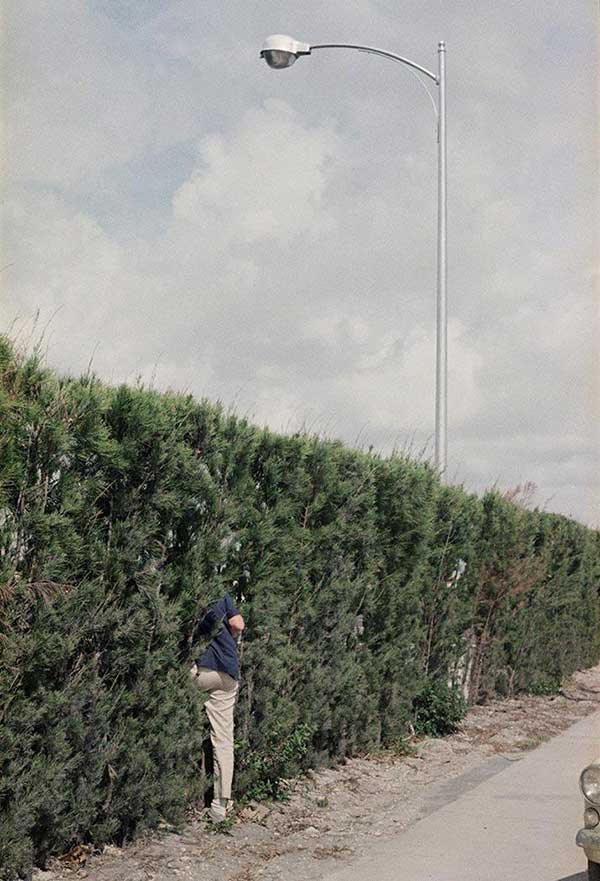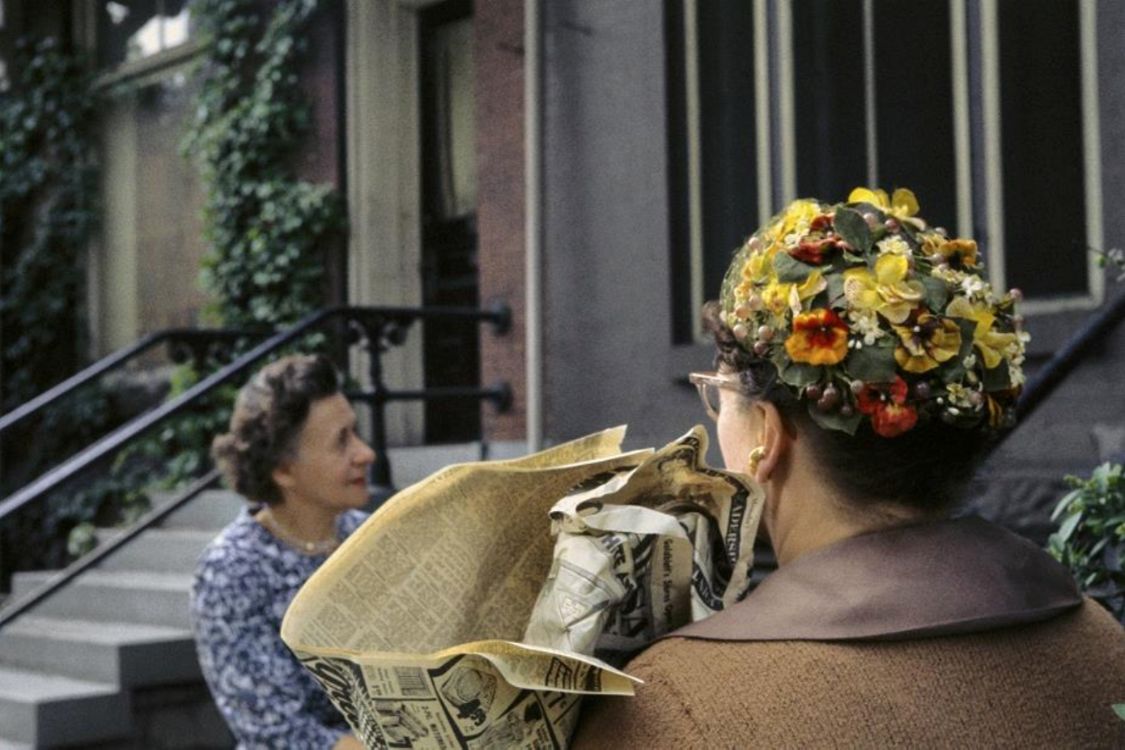Vivian Maier’s ability to locate small details and incongruous parallels in everyday life created compositions which are uncanny in both senses of the word: subtly humorous, but also strange and enigmatic. In the late 1970s, Vivian Maier stopped using her famed Rolleiflex camera altogether, and most of her photographs taken in the last quarter of the twentieth century were colour transparencies, captured on Ektachrome film. Whilst Maier’s black and white works gain their imaginative energy from subtleties of form and composition, her later use of colour allows for a greater spectrum of visual rhymes than her earlier, monochromatic works, realising the incongruous elements of her imagery through fully saturated colour.
Capturing the chaos of America’s major metropolises, and capitalising on reflections, shadows, and silhouettes, Maier’s work is characterised by obfuscation and voyeurism. Many of her compositions are taken from waist height; from above a playground, looking down; from behind as a man walks down the street – composite strategies which embody an evasive anonymity. Maier’s self-portraits take on this same disconnect, with the photographer’s eyes often refusing to meet the viewer’s gaze, as in Self-Portrait, Chicago, October 1975, where the viewer glimpses only a half-view reflection of Maier’s face.

Miami, 1960. Vivian Maier
Maier’s subjects are often rendered distant through preoccupation, or from having been captured with their backs turned, as if she were an invisible force mining the streets for their potential to reveal both withdrawing and forthcoming characters. In modern philosophy and psychology, the category of the ‘incongruous’ has been used as an explanation for why we find things funny: from eighteenth-century philosopher James Beattie, who suggested that laughter seems to arise from ‘the view of things incongruous united in the same assemblage’, to Immanuel Kant, who understood humour to be defined by a ‘changing free play of sensations’, caused by ‘shifting ideas in the mind’. In both of these instances, that which defies norms is comic by virtue of transgressing our expectations.
Maier’s compositions capitalise on these transgressions, gaining imaginative power through their re-framing of city detritus and for their ability to single out meaningful instances in the vast, urban spaces of New York and Chicago. Consider a 1976 photograph shows a man’s head, heavily wrapped up but for his bald crown; or Chicago, February 1976, displaying the anonymous text ‘JUST PUT ON A HAPP FACE’ – the letter ‘y’ having ironically fallen from the sign. Finally, Miami, 1960 shows a figure half obscured by a hedgerow. In opposition, a lamppost grows from the same hedgerow, dominating the top right-hand corner of the frame. Humour emanates from the symbiosis of these two, discrete urban incidents – a parallel captured by Maier where the viewer would not have expected it otherwise
(By Emma Sharples)
